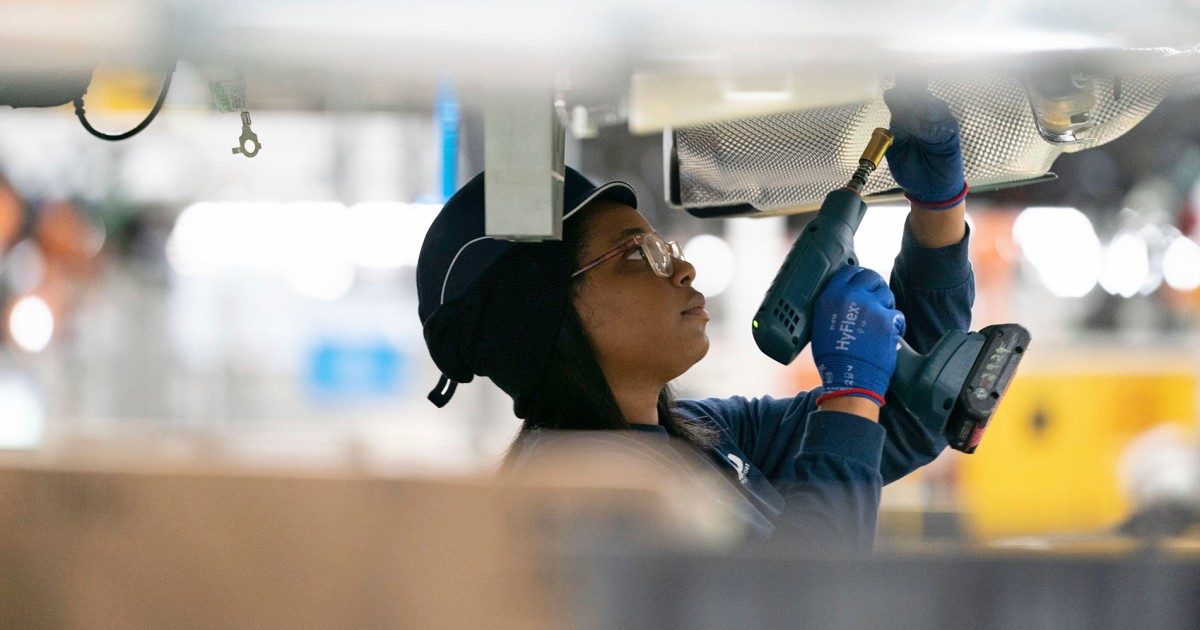Navigating Uncertainty: The Impact of Trump’s 25% Tariff Threat on the Auto Industry
As the auto industry braces itself for the potential implementation of a 25% tariff threatened by former President Donald Trump, stakeholders across the sector are left grappling with uncertainty. This looming tariff has sparked heated discussions about its implications for market dynamics, consumer costs, and the overall health of the automotive sector. With manufacturers, consumers, and policymakers all on edge, it is crucial to explore how this tariff threat might reshape the landscape of the auto industry and what strategies manufacturers might adopt in response.
The Context of the Tariff Threat
The proposal for a 25% tariff on imported vehicles was initially introduced under the premise of protecting American jobs and promoting domestic manufacturing. Trump argued that foreign automakers were taking advantage of the U.S. market, ultimately harming American workers. This stance aligns with a broader trend of increasing protectionism that has characterized recent trade policies.
However, the implications of such a tariff are far-reaching. Industry experts warn that a significant tariff on imported vehicles could lead to increased prices for consumers, a potential decline in sales, and broader repercussions for the global supply chain. The auto industry, which relies heavily on cross-border trade, could face significant disruptions if the tariff is enacted.
Potential Impacts on Consumers and the Market
One of the most immediate concerns regarding Trump’s 25% tariff threat is the potential for increased vehicle prices. Here’s how this could unfold:
- Higher Costs for Imported Vehicles: If the tariff is imposed, foreign automakers may pass the cost onto consumers, leading to higher sticker prices for imported vehicles.
- Reduced Options for Consumers: Domestic manufacturers may find themselves at a competitive disadvantage, limiting the variety of vehicles available to consumers.
- Impact on Used Car Market: As new vehicle prices rise, the demand for used cars may increase, leading to higher prices in the pre-owned market.
Moreover, economic dynamics could be altered significantly. An increase in vehicle prices could deter consumers from purchasing new cars, leading to a slowdown in sales for auto manufacturers. This could create a ripple effect, impacting dealerships, suppliers, and related industries.
Manufacturer Responses to Tariff Threats
In light of the tariff threat, auto manufacturers are likely to adopt various strategies to mitigate potential risks. Some of these strategies include:
- Shifting Production: Companies may consider shifting production to countries with more favorable trade conditions to avoid tariffs. This could involve relocating factories or increasing production capacity in areas less affected by the tariff.
- Price Adjustments: Automakers might adjust their pricing strategies, absorbing some of the costs or reducing margins to remain competitive.
- Supply Chain Re-evaluation: Manufacturers will likely re-evaluate their supply chains to minimize tariffs’ impact, potentially sourcing materials and components domestically or from unaffected regions.
Additionally, some companies might increase investments in domestic manufacturing to bolster their standing against tariff threats. This could lead to job creation and economic growth in the long term, despite short-term challenges.
Global Implications of the Tariff Threat
The implications of Trump’s 25% tariff threat extend beyond the borders of the United States. Global automakers are also watching the situation closely, as a significant tariff could alter trade relationships and market conditions worldwide. Here are some potential global effects:
- Trade Tensions: The implementation of such tariffs could escalate trade tensions between the U.S. and its trading partners, leading to retaliatory measures that could further disrupt the global automotive market.
- Shifts in Market Share: Foreign automakers may adapt by focusing on other markets, potentially losing market share in the U.S. to domestic rivals.
- Investment Shifts: Global manufacturers may reconsider their investment strategies, diverting funds to regions with more stable trade environments.
Ultimately, the interdependence of the global automotive market means that changes in the U.S. tariff policy can have far-reaching consequences for automakers and consumers around the world.
Long-term Outlook for the Auto Industry
While the immediate threat of a 25% tariff poses challenges, it is essential to consider the long-term outlook for the auto industry. The industry is undergoing a significant transformation, driven by technological advancements, changing consumer preferences, and a growing emphasis on sustainability. Some key trends to watch include:
- Electrification: The shift towards electric vehicles (EVs) is gaining momentum, with many manufacturers investing heavily in EV technology. Tariffs on traditional vehicles may accelerate this transition as companies seek to innovate to stay competitive.
- Digitalization: The rise of digital technology is reshaping the auto industry, from manufacturing processes to customer experiences. Companies that embrace digital transformation may find new opportunities for growth.
- Sustainability Initiatives: As consumer preferences shift towards environmentally friendly vehicles, manufacturers will likely prioritize sustainability in their production and supply chain strategies.
In this context, the potential tariff may serve as a catalyst for change rather than a mere obstacle. By adapting to these challenges, the auto industry can emerge stronger, more innovative, and better equipped to meet the demands of a rapidly evolving market.
Conclusion
The looming threat of Trump’s 25% tariff on imported vehicles undoubtedly casts a shadow over the auto industry, leaving stakeholders uncertain about the future. However, by navigating this uncertainty with strategic foresight and adaptability, manufacturers can mitigate risks and seize new opportunities. The interplay between market dynamics, consumer behavior, and global trade relationships will shape the industry’s trajectory in the coming years. As the landscape evolves, one thing remains clear: the resilience of the auto industry will be tested, but its capacity for innovation and adaptation will ultimately determine its success.
See more CCTV News Daily



